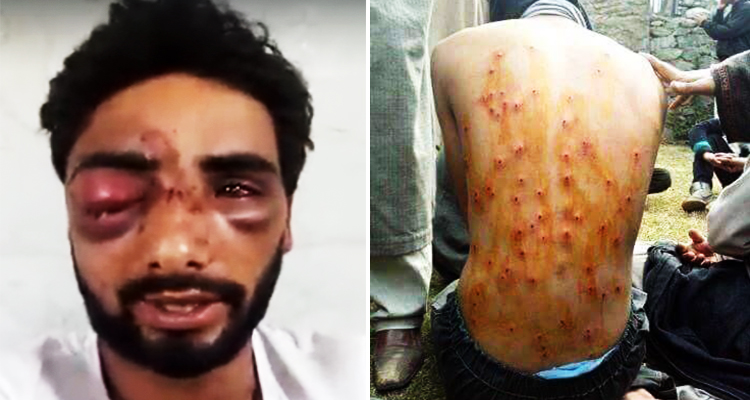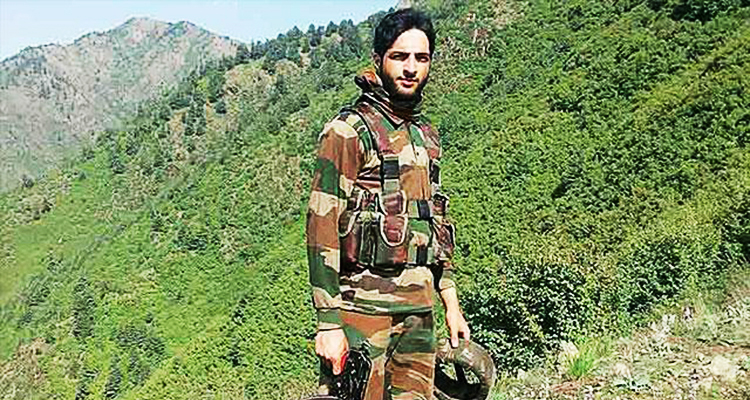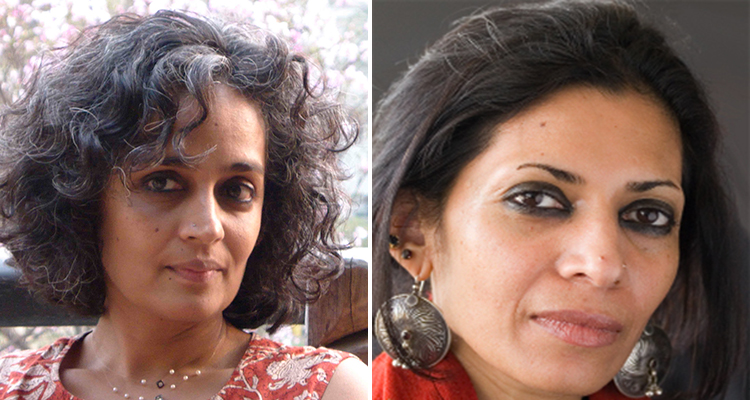Written by: Dr. Dushka H. Saiyid
Posted on: July 20, 2016 | 
Resisting the Indian Army with stones
The extra-judicial killing of the 22-year-old militant Burhan Wani on July 8 has sparked another wave of unrest in Kashmir. Hindustan Times called him “the new face of Kashmir militancy”: young, good looking, and from an educated background, he successfully mobilized the Kashmiri youth through social media, reviving and legitimizing a homegrown militancy in Kashmir. The Indian forces have responded by a change of tactics: the deadly use of pellets that damage retinas and blind the demonstrators. According to the latest count, 3,500 people have got eye injuries and 45 people are dead, but the hospitals have run out of equipment and facilities to treat the increasing numbers of injured youth as an eleven-day curfew has been declared.

When the rigged elections of 1987 shattered all hopes of democratic change, the disaffection led to the uprising of 1989. Other movements of resistance followed in 2008 and 2010, resulting in over 200 deaths, most of them civilians and caused by the Indian forces.
With Kashmir grabbing the headlines again, I delve into a less known book published a few years back. Kashmir: The Case for Freedom is an anthology of articles sympathetic to the cause of Kashmiris, and includes a poem by Habbah Khatun, a sixteenth century poet who became the wife of the ruler of Kashmir. While Pankaj Mishra has written the introduction, Tariq Ali has given a backgrounder to the Kashmir problem, charmingly gossipy, but cavalier with historical facts, e.g. T.E. Lawrence had married Akbar Jahan while visiting Lahore in 1929, or that the Quaid-i-Azam had authorized the invasion of Kashmir; both facts are disputed and unconfirmed.

Hilal Bhatt’s moving account of his train journey as a student returning home from Aligarh to Kashmir on Fayazabad 31223, is both heart-wrenching and a damning commentary on right-wing Hindu mob rule in India. It recalls the wanton killing of Kashmiri students who found themselves traveling on the same train as the Hindu Kar Sevaks (volunteers) returning after demolishing the Babri mosque in 1992. The painful fact in this whole episode was that it was enough for the Kar Sevaks to discover that the students were Kashmiri Muslims to hack them to death, and Bhatt only escaped by lying that he was a Pundit from Jammu.
Chatterjee, a Professor of Social and Cultural Anthropology and co-convener of the International People’s Tribunal on Human Rights, has been visiting Kashmir and interviewing people in the valley at some personal risk. Her chapter on Militarized Zone probes the Indian state’s methods of social control and declares that “State violence is the sine qua non for the maintenance of the Indian nation”, which is buttressed by the Public Safety Act of 1978. This preventive detention law authorizes incarceration for up to two years on grounds of unconfirmed suspicion. Not surprisingly, stories of torture, rape, extra-judicial killings and unmarked mass graves abound. Chatterjee quotes an Amnesty International report of 2011 stating that between eight and twenty thousand people have been held under the PSA over the last twenty years. With a presence of 671,000 troops in Kashmir, which received $5 billion worth of arms from Israel to combat Islamic militants, it is one of the most militarized regions of the world. Chatterjee argues very cogently that human rights violations will continue until the Indian military is removed; but if that happens, India will lose control over Kashmir.

Arundhati Roy has two chapters in the book, one on Azadi (freedom) and the other on Nehru. The one on “Seditious Nehru” has his public statements on Kashmir starting from October 1947 right up to 1957, each one pledging to hold a plebiscite and conceding the right of self-determination to Kashmiris, but never fulfilling that promise. In “Azadi: the only thing Kashmiris want”, Roy recounts the movement of 2008, when they came out in peaceful rallies of hundreds of thousands, and in equal numbers shouted, “We want freedom” and “Jeevay jeevay Pakistan”, or long live Pakistan. However, she argues that the public affection for Pakistan would not automatically translate into a desire to accede to Pakistan. Roy states in the latest issue of the Indian Outlook magazine of 25th July, 2016, “Kashmiris are not fighting for the establishment of the rule of law or an end to human rights violations. They are fighting for azadi. For this, they are prepared to face down bullets with stones. For this, they are prepared to die in numbers”.

Pankaj Mishra points out that 80,000 deaths in Kashmir have had little impact on the Indian liberal conscience, but in the post-Burhani scenario, groups of Indians have emerged on the streets of Delhi to protest the violence unleashed on the hapless youth of Kashmir by the Indian forces. The international media, and the western media in particular, continues to be selective in its coverage of issues of human rights. Gross violations in Kashmir remain ignored, but when there is even a single episode in Pakistan or China, the western media becomes the standard bearer of human rights.
You may also like: